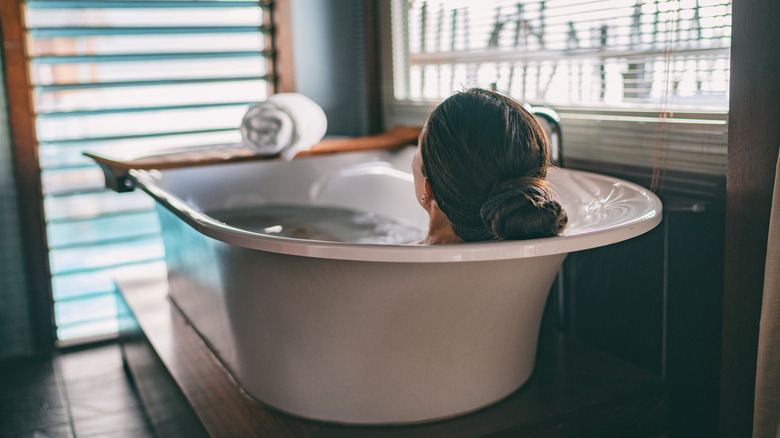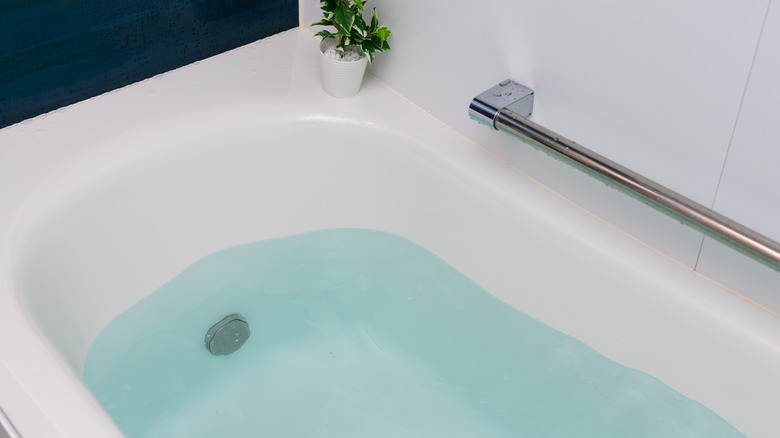Is Contrast Bath Therapy Actually Effective?
Contrast bath therapy is a type of hydrotherapy that involves immersing your body in water, repeatedly alternating between hot and cold water temperatures. Also known as hot/cold immersion therapy, contrast bath therapy is used as a physical therapy treatment for injured athletes, and is also known for its healing and therapeutic effects (via Healthline). Contrast bath therapy works by rapidly opening your blood vessels in hot water and then constricting them in cold water. This creates a pumping effect that can help improve circulation and reduce swelling and inflammation near any injured areas of the body.
Although contrast bath therapy is technically considered passive therapy, which is generally less effective than active therapy, studies have shown that it can relieve post-game or post-workout fatigue and reduce muscle soreness. It can also help rid your body of excess lactic acid, which can accumulate after an intense workout and cause additional soreness and fatigue.
How to make a contrast bath
While contrast bath therapy is usually performed by a physical therapist, you can make your own contrast bath at home. To administer your own contrast bath therapy, you'll need to fill up two tubs: one with warm water and the other with cold (via Verywell Health). The water in the cold tub should be around 50 to 60 degrees, while the water in the warm tub should be anywhere between 98 and 110 degrees.
Once the two tubs are full, you can immerse your entire body, or just the injured body part, in the warm-water tub for three to four minutes. When the time is up, immediately immerse yourself in the tub with cold water for one minute. This cycle should continue for about 20 to 30 minutes total. During this time, the water in both tubs will likely cool down or warm up, so you'll need to add more cold or warm water to each tub to maintain the correct temperatures.


